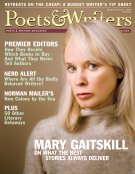Narrative journalism (the term these writers tend to prefer) is advancing rapidly on memoir in terms of sales and awareness because, contrary to Moore's assertion, form is not more important than content when you claim that something is true. For the best narrative journalists, research drives the story, not the other way around. And this has earned them a payoff: Unlike memoir, readers still believe that narrative journalism is true—not just in some heartfelt sense but factually as well.
As any newspaper reader (how many of us are left?) can attest, narrative is everywhere in journalism these days. Even informational articles often start with a scene and center on a main character. In newsrooms and journalism schools, the talk of "narrative" is incessant. The danger in all of this is that storytelling, while basic to human communication, has different imperatives and raises different ethical questions than does traditional journalism. When we appropriate other people's lives and experiences, rendering them according to our own beliefs and the requirements of story, we have to be careful. We have to make sure we not only find the necessary and verifiable facts but also honor them, refusing to let the impulse to tell a good story or to privilege our own point of view distort what the research says or might say if we had done it better.
This applies to all of us—whether we call ourselves journalists or creative nonfiction writers—who want to claim that the stories we tell are true.
The Poynter Institute's Roy Peter Clark states the problem succinctly in "The Line Between Fact and Fiction," a chapter on ethics in Telling True Stories (Plume, 2007), a Nieman Foundation anthology that is one of the best books available on narrative nonfiction writing. "Some contemporary nonfiction authors defend invention in the name of reaching for some higher truth," he writes. "Such claims are unjustifiable in any journalism."
Clark doesn't mean just the wholesale fabrications of a Jayson Blair or Stephen Glass but also what John Berendt, the best-selling author of the supposedly nonfiction book Midnight in the Garden of Good and Evil (Random House, 1994), calls "rounding the corners"—making up dialogue, for example, or manipulating events to end up with a better story.
Some of the more insidious inventions may not seem like inventions—even to the writers themselves—because they're based on solid "facts." They come, paradoxically, from the more sophisticated research-gathering techniques and better understanding of story today's most talented nonfiction writers possess. In this case, the facts aren't made up or changed; what's manipulated is how they're presented and interpreted.
A good example comes again from Sebastian Junger. In A Death in Belmont (Norton), his 2006 follow-up to The Perfect Storm, he revisits the rape and murder of an elderly woman named Bessie Goldberg in the Boston suburb of Belmont in 1963, when the Boston Strangler was active. Although an African American handyman named Roy Smith was convicted of the crime, Junger suggests that a white man named Albert DeSalvo, who later claimed to be the Boston Strangler and was working at Junger's parents' house—not far from the Goldberg place—on the day of the murder, might have been the real culprit.









